
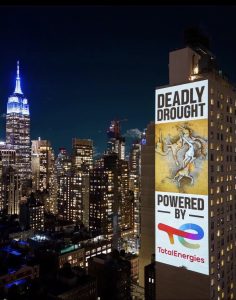
Projection on NYC building during Climate Week
North Texas was finally experiencing some slightly cooler weather on September 11th when I drove to Arlington, Texas to meet Liveable Arlington executive director Ranjana Bhandari, and journalists from France. The journalists were there for a story about the colonization of Arlington by TEP Barnett, an affiliate of French energy giant, TotalEnergies.
At approximately 10:15 AM we left Starbucks and proceeded on an abbreviated Toxic Tour of Arlington to give the journalists a sense of the density and proximity to homes and schools of oil and gas wells in Arlington neighborhoods.
DWG #1 Compressor Station
We arrived at the DWG #1 Compressor Station operated by DFW Midstream at 12:20 PM. We parked in the Spec’s Liquor Store parking lot where there was a strong hydrocarbon smell. (Since my first visit to this site in 2016, there has consistently been a strong hydrocarbon odor.) It was 81° with a 6.5 mph S-E wind.
The hydrocarbon smell intensified as we walked across the street. A business owner gave us permission to film from the fence line his business shares with the facility. He remarked that the odor has persisted for many years and said it sometimes infiltrates into his building. His building is about 12 to 15 feet from the facility’s fence.
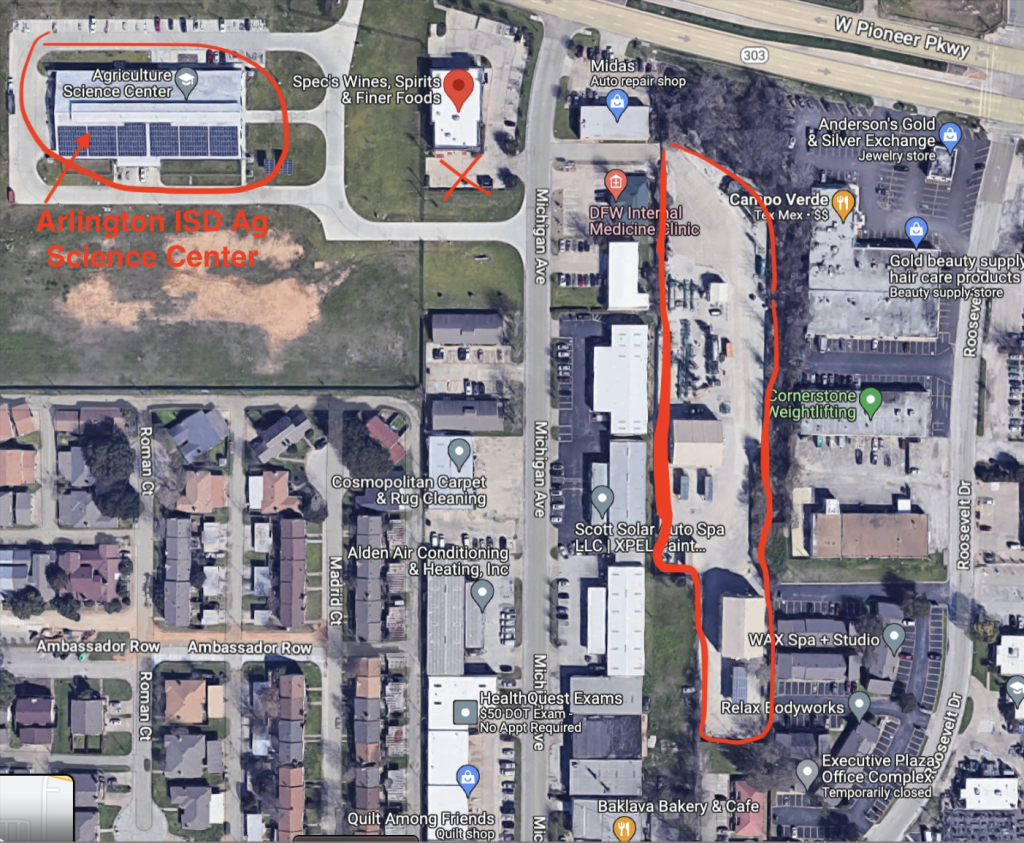
Map showing proximity of the oil and gas compressor and processing facility to buildings in the area. The circled building is Arlington ISD Agriculture Science Center where children come for AG and science projects.
The site’s permit says the “nearest receptor” is 50 feet from the facility. (A receptor is the who that would receive and be affected by pollution from the site.) It is easy to see from the map that none of the businesses are 50 feet from the facility so the permit is inaccurate. There is no/little ground-truthing done by TCEQ for these permits. They generally accept whatever the operator submits.
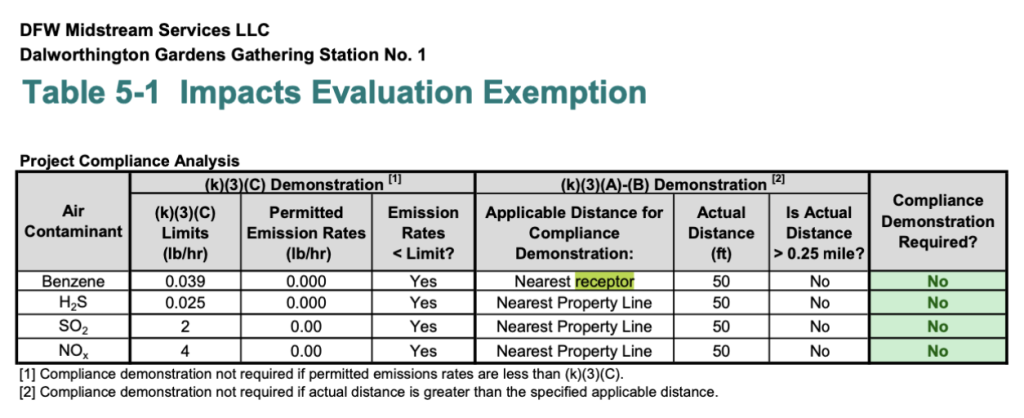
Table from permit
The permit is signed by Zac Covar. Covar served as Governor Rick Perry’s environmental adviser before Perry appointed him in January 2014 to serve as one of three Commissioners at TCEQ. Then just 17 months later, Cover walked through Texas’ well worn revolving door to become the Vice President at Summit Midstream Partners, LP. The DFW Midstream compressor station is a subsidiary of Summit Midstream.
I used an optical gas imaging (OGI) camera that makes normally invisible oil and gas pollution visible. Looking through the Teledyne FLIR Gx320 OGI camera (borrowed from FLIR for this field work), I observed two exhaust stacks that were releasing uncombusted/partially combusted emissions to the atmosphere. During portions of the videos, the OGI camera indicated that the left stack was hotter than the shorter stack to the right, meaning it likely had better combustion at that time. There were also emissions coming from the horizontal separator.
This site was much worse than when we surveyed it in March with EPA Region 6 Administrator Earthea Nance.
We lingered at the site long enough that every member of the party felt quite ill. The journalists were unsure that they were well enough to continue the tour. We decided to stop for lunch to try to recover.
EnLink Midstream Lake Arlington Compressor Station
We arrived at the EnLink Midstream Lake Arlington Compressor station at 3:30 PM. It was 88° with a 6 mph S-E wind.
The French journalist needed to capture some “B -roll” to help tell their story. This required several trips up and down the road, getting in and out of my electric vehicle, and holding the camera while they filmed me. I was unable to focus on the entire site so I focused on the liquids tanks because through the years they have been reliable polluters.
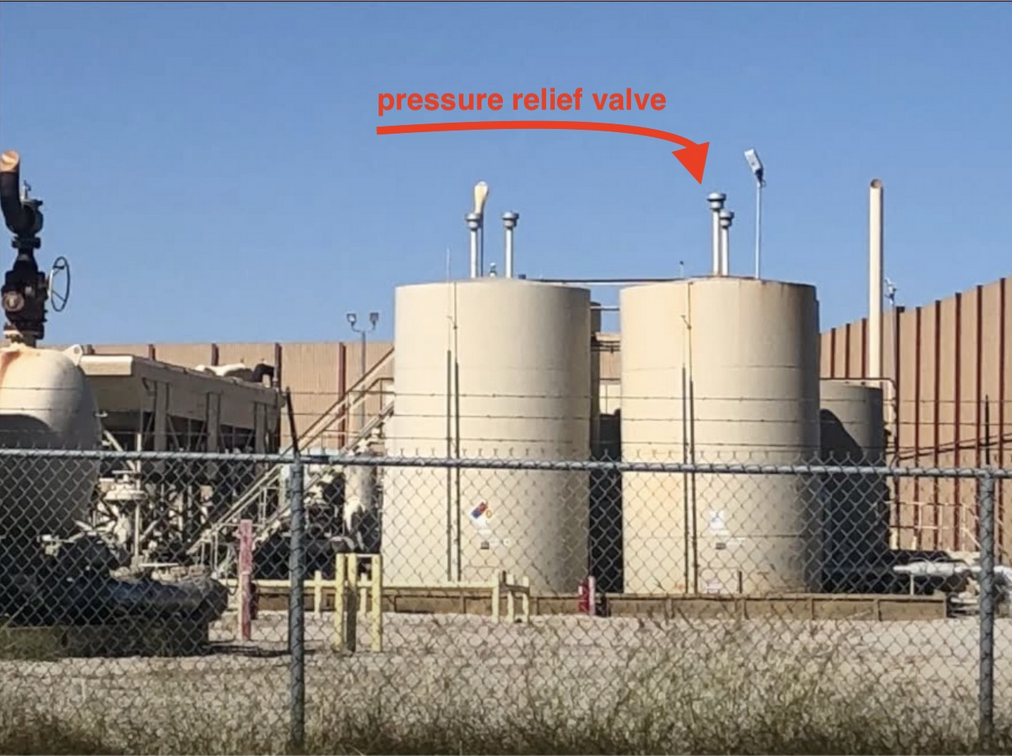
Tanks hold liquids so pressure relief valves release the associated gas.
I documented significant hydrocarbon emissions being released in a steady stream from multiple storage tank pressure relief valves. I filmed from two different viewing angles and in a variety of color palettes and in high-sensitivity mode.
The map shows how close the Carver Heights East community just a few hundred feet southeast from this site and across East Rosedale Street are more homes that are even closer.
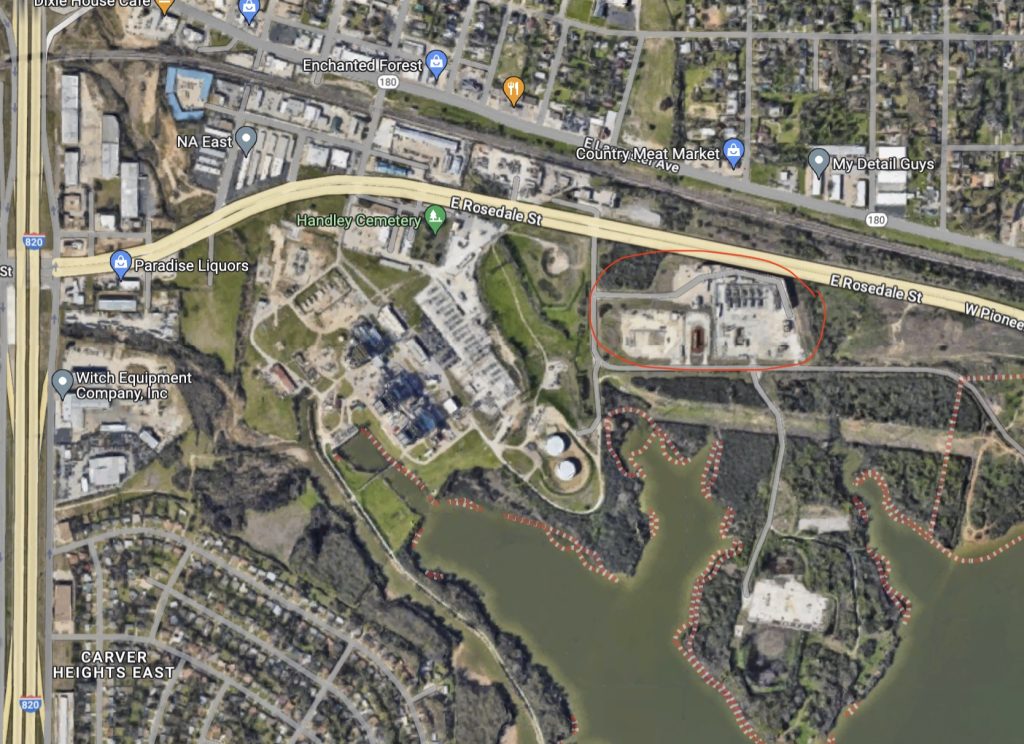
Overall, there were some improvements since our March survey, but the pressure releases from the tanks that have always been a problem were even worse.
The French documentary is USA : Arlington, la course au GNL
Here are the videos we recorded at the sites: